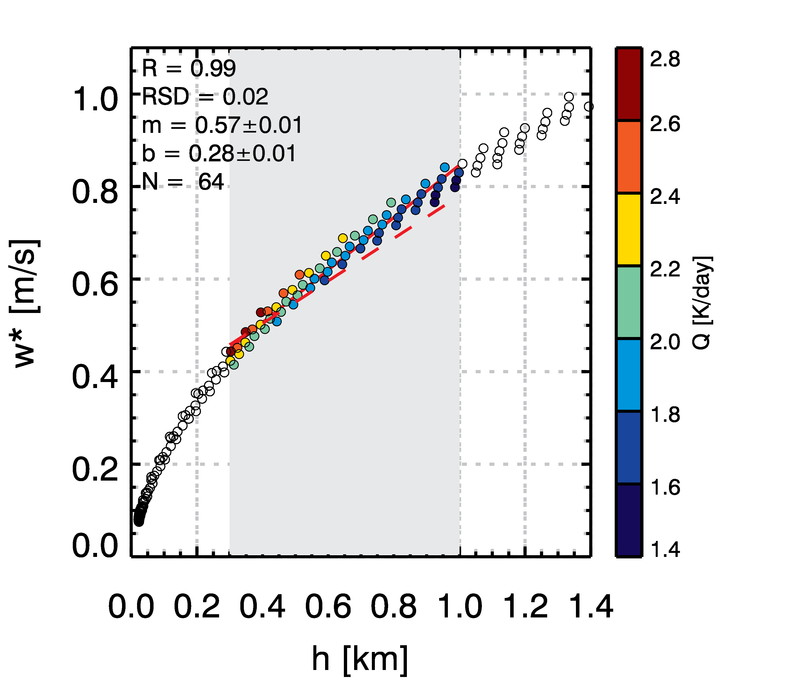A theory for sub-cloud updrafts and cloud-base height
Submitter:
Zheng, Youtong — University of Houston
Li, Zhanqing — University of Maryland
Area of research:
Vertical Velocity
Journal Reference:
Science
We develop a new theory that explains why air flows are more energetic under higher bases of oceanic shallow clouds
Impact
Since the early 2000s, It has been suggested that sub-cloud updrafts are stronger under higher bases of shallow cumulus. Lightening scientists used this relationship to explain the land-ocean contrast in lightning activities. Recent observations show that the relation between these two variables is linear. However, a well-established theory that explains the relationship and its linearity is still missing. This study fills this theoretical gap.
Summary
By synthesizing a mixed-layer model and radiative transfer theory, we found that the linear relationship between updrafts and cloud-base height arises from the conservation law of energetics that requires the radiative flux divergence of a sub-cloud mixed layer to balance surface buoyancy flux. Given a certain mixed-layer radiative cooling rate per unit mass (Q), a deeper mixed layer (higher cloud base) undergoes more radiative cooling and requires stronger surface buoyancy flux to balance it, leading to stronger updrafts. The rate with which the updrafts vary with the mixed-layer depth is modulated by the Q. The Q manifests strong resilience to external large-scale forcing that spans a wide range of climatology, allowing the slope of the updrafts-zb relationship to remain nearly invariant. This causes the relationship to manifest linearity.


